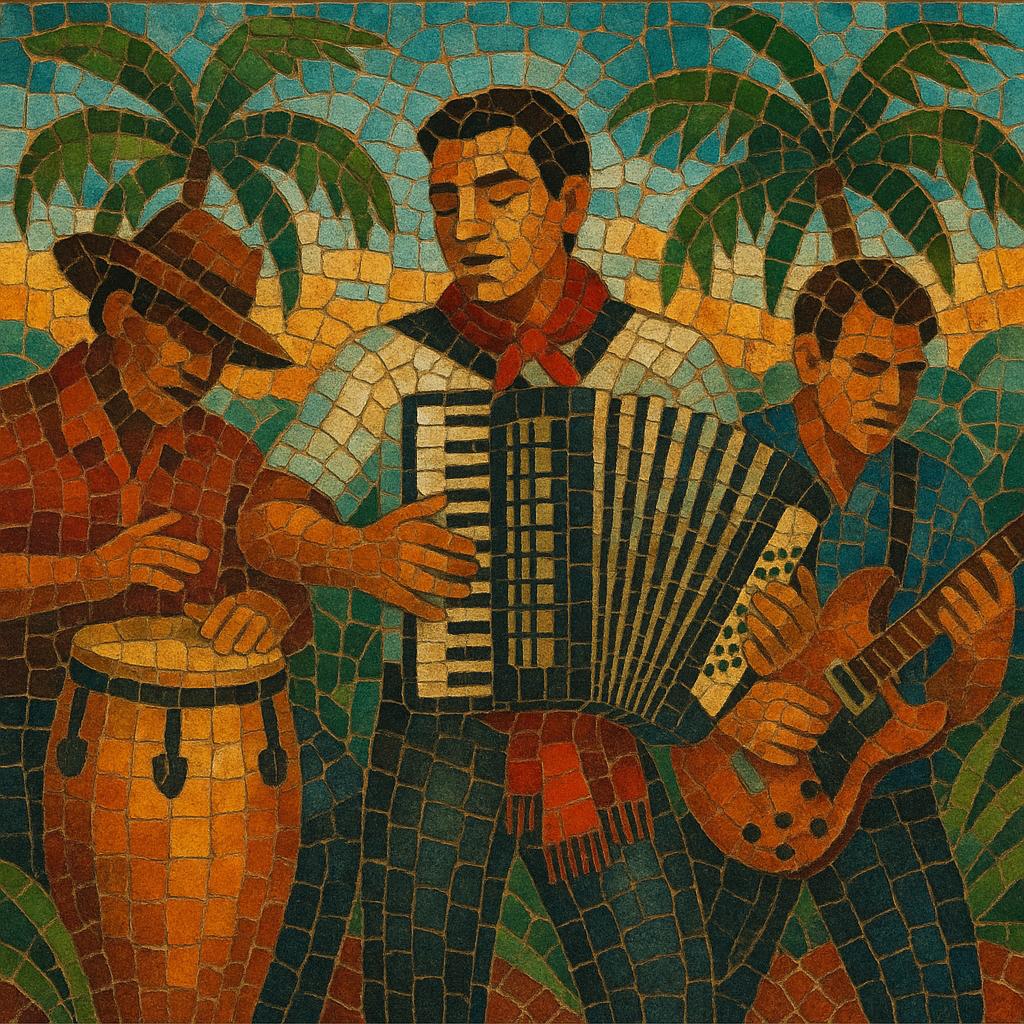Chamamé tropical is a dance-oriented, electrified take on the traditional chamamé of Argentina’s Litoral region.
It blends the accordion-led, 6/8 lilt and rural poetics of chamamé with the four-on-the-floor drive, percussion, and keyboards typical of the broader Latin "tropical" dance band circuit (notably cumbia). Arrangements favor catchy hooks, verse–chorus forms, and bright timbres that make the style suitable for bailes populares and festival stages.
While it keeps core Litoraleño identities—sapukái shouts, references to the Paraná river basin, and Guaraní-inflected imagery—it updates grooves with drum kits or drum machines, electric bass, congas/guira, and synths, yielding a sound that is at once rootsy and modern.
Chamamé tropical emerged in northeastern Argentina (Corrientes, Chaco, Formosa, Misiones) when baile-oriented “grupos tropicales” began adapting chamamé repertoire to the amplified, dancefloor-forward formats popularized by cumbia and other tropical styles. The result married chamamé’s characteristic 6/8 sway and accordion melodies with a steadier, club-ready backbeat and brighter, keyboard-heavy textures.
Through the 1990s, regional dance bands standardized the approach: electric bass locking a syncopated tumbao, drum set or drum machines providing a consistent pulse, and accordion/guitar retaining melodic leadership. Cover versions of beloved chamamés were reimagined with pop structures, while new songs were composed specifically for festive dance crowds. Radio and local bailes helped the style circulate across the Litoral and into Paraguay and southern Brazil.
Today, chamamé tropical coexists with more traditional chamamé and with pop-folk fusions. It remains a staple at community dances and regional festivals, often serving as an entry point for younger audiences to the chamamé tradition. Modern productions may incorporate cleaner studio sheen, sidechained synth pads, and tighter rhythm-section editing while maintaining hallmarks like sapukái exclamations and riverine, countryside imagery.


